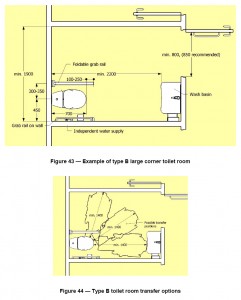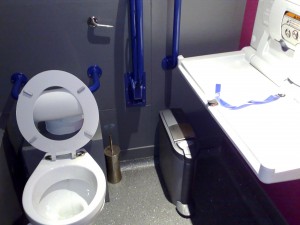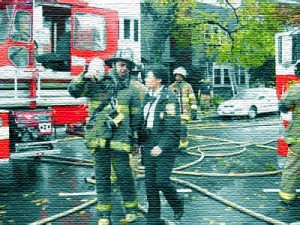2009-11-30: The Dublin Archdiocese (Murphy) Commission of Investigation was established to report on the handling by Church and State Authorities of a representative sample of allegations and suspicions of child sexual abuse against clerics operating under the aegis of the Roman Catholic Archdiocese of Dublin during the period 1975 to 2004.
The Commission, which continues its investigations, is chaired by Judge Yvonne Murphy. There are two other members of the Commission: Ms. Ita Mangan and Mr. Hugh O’Neill.
The Dublin Report (the first of many ?) … was submitted to Mr. Dermot Ahern T.D., Minister for Justice, Equality & Law Reform on 21st July 2009.
Dublin Report Paragraph #1.113 (Page 28) – Conclusion
‘ The Commission has no doubt that clerical child sexual abuse was covered up by the Archdiocese of Dublin and other Church Authorities over much of the period covered by the Commission’s remit. The structures and rules of the Catholic Church facilitated that cover-up. The State Authorities facilitated the cover up by not fulfilling their responsibilities to ensure that the law was applied equally to all and allowing the Church Institutions to be beyond the reach of the normal law enforcement processes. The welfare of children, which should have been the first priority, was not even a factor to be considered in the early stages. Instead the focus was on the avoidance of scandal and the preservation of the good name, status and assets of the Institution and of what the Institution regarded as its most important members – the priests. In the mid 1990s, a light began to be shone on the scandal and the cover up. Gradually, the story has unfolded. It is the responsibility of the State to ensure that no similar Institutional immunity is ever allowed to occur again. This can be ensured only if all Institutions are open to scrutiny and not accorded an exempted status by any organs of the State.’
The Department of Justice, Equality & Law Reform has been very sloppy in the manner that it has presented the Dublin Report on the Department’s WebSite. For your convenience, therefore, the Full Original Report is presented here as a single PDF File …
Date of Original Report: 21 July 2009. PDF File, 3.98 Mb.
Murphy Commission Report on Child Sexual Abuse in the Roman Catholic Archdiocese of Dublin
Click the Link Above to read and/or download the Full Original Report
December 2010
Murphy Commission Report: Tony Walsh – ‘Fr Jovito’ – Portions
Click the Link Above to read and/or download PDF File (155 kb)
July 2013
Murphy Commission Report: ‘Patrick McCabe’ Redacted Material (Chapter 20 – Pages 1-10 Only)
Click the Link Above to read and/or download PDF File (2.2 MB)
Important Note: The Full Chapter 20 PDF File, with the ‘Patrick McCabe’ Redacted Material … recently re-issued on 12 July 2013 … has 99 Pages and weighs in at a whopping 19.31 MB ! It can be downloaded from the Department of Justice & Equality WebSite … http://www.justice.ie/en/JELR/Pages/PB13000293
.
Those Individuals … whether members of Church or State Authorities … who have been named and shamed in the Dublin Report … or who will be named and shamed in connection with the Dublin Report … must resign, and be brought to justice.
If our ‘State’ is serious about the Protection of Children … Ireland must NOW fully and effectively implement the 1989 United Nations Convention on the Rights of the Child … which entered into force, i.e. became an International Legal Instrument, on 2nd September 1990. LATER is no longer acceptable !
This is a fundamental foundation for a Comprehensive National Framework of Child Protection Related Legislation, Standards and Guidance Documents, with the necessary accompanying Administrative Provisions and Monitoring Measures.
1989 United Nations Convention on the Rights of the Child
Click the Link Above to read and/or download the UN Convention (PDF File, 112kb)
Of much interest … the VIENNA DECLARATION AND PROGRAMME OF ACTION, adopted by the World Conference on Human Rights on 25th June 1993, stated …
‘ The World Conference on Human Rights, welcoming the early ratification of the Convention on the Rights of the Child by a large number of States … urges universal ratification of the Convention by 1995 and its effective implementation by States Parties through the adoption of all the necessary legislative, administrative and other measures and the allocation to the maximum extent of the available resources … ‘
Ireland signed the Convention on 30th September 1990 … and ratified the Convention on 28th September 1992.
As of today’s update, 16th July 2011, Ireland has still not properly implemented the UN Convention on the Rights of the Child.
.
Update 2011-07-16 … one more recently published report !!
Commission of Investigation – December 2010
Report into the Catholic Diocese of Cloyne
Click the Link Above to read and/or download PDF File (2.37 Mb)
.
.
POSTSCRIPT
2011-10-09: The Irish Minister for Children and Youth Affairs, Ms. Frances Fitzgerald T.D., launched the Amnesty Ireland Report: ‘In Plain Sight’ in the Royal Hibernian Academy (RHA), 15 Ely Place, Dublin … on the morning of 26 September 2011. The research for this report was undertaken by Dr. Carole Holohan, and the report was commissioned by Amnesty International Ireland.
Key Findings of Amnesty’s ‘In Plain Sight’ Report (2011)
This report has five key findings …
1. No clear lines of responsibility make true accountability impossible.
This report demonstrates how the absence of clear lines of public and private responsibility in the provision of services, along with the absence of effective accountability mechanisms, allowed the abuse of children to continue unchecked. In the case of residential institutions, it wasn’t that the system didn’t work but rather that there was no system. While both the perpetrators of crimes against children, and the institutional Church within which they operated, hold responsibility for this abuse, State authorities also failed in their duty to monitor residential institutions effectively, to act appropriately when abuses by agents of the Catholic Church in communities came to light, and to take action to prevent the continuation of abuse.
2. The law must protect and apply to all members of society equally.
The Reports on child abuse highlight how the law did not serve or apply to all members of Irish society equally. The most obvious example of this is how children who were placed in residential institutions were branded as criminals as a result of the court committal process, while the majority of perpetrators of abuse have not been held to account by that same criminal justice system. Despite the severity of the crimes revealed in the Ferns, Ryan, Murphy (Dublin) and Cloyne Reports, which range from physical assault to rape, very few perpetrators have been convicted. Furthermore, no criminal charge has been laid against those in positions of authority in the Catholic Church who concealed crimes against children and allowed known sex abusers to continue to have access to children and to continue to abuse with near impunity. The Reports raise serious questions about the rule of law, given the evidence of deferential treatment shown to priests and bishops by members of the Gardaí.
3. Recognition of children’s human rights must be strengthened.
This report includes a human rights analysis of the abuses detailed in the Ferns, Ryan, Murphy (Dublin) and Cloyne Reports. The sexual abuse in the diocesan reports, and the sexual, physical and emotional abuse, the living conditions, and the neglect described in the Ryan Report, can be categorised as torture, and cruel, inhuman and degrading treatment under human rights law. The Reports also demonstrate that children’s rights to private and family life, the right to a fair trial and the right to be free from slavery and forced labour were contravened, as was their right to education and to physical and mental health. The invisibility of children in law, policy and public debate is directly related to the fact that children do not have express constitutional rights. It is essential that the rights of the child be made explicit in the Irish Constitution and that the paramount importance of the rights of the child be explicitly enshrined in law.
Children do not represent a homogenous social category and children from different subsections of society have very different experiences. The majority of children in industrial schools were placed there as a direct result of the poverty of their families. We must not ‘other’ any groups of children. Particularly vulnerable groups of children today include children in care, Traveller children, children in the criminal justice system, children with mental health problems, children experiencing homelessness, children living in poverty, and asylum-seeking children.
4. Public attitudes matter – Individual attitudes matter.
The Reports identify the impact of deference to the Catholic Church on how people responded to abuse and suspicions of abuse. Fear, an unwillingness and an inability to question agents of the Church, and disbelief of the testimony of victims until recent times indicate that wider societal attitudes had a significant role to play in allowing abuse to continue. The end of deference to powerful institutions and the taking of personal responsibility on behalf of all members of society will initiate some of the changes that are necessary to prevent the occurrence of human rights abuses.
Wider societal attitudes to children who experienced residential institutions were often negative and hostile. The prejudice and discrimination they experienced led many to emigrate, leading to the further disintegration of families who had already been divided when the children were placed in institutions. We must be aware of the impact of prejudice and negative attitudes towards marginalised groups in our society. Negative attitudes towards children in the criminal justice system, people with disabilities, asylum seekers and people with mental health problems makes life more difficult for members of our society who may already be vulnerable.
5. The State must operate on behalf of the people, not on behalf of interest groups.
The Reports demonstrate how the State had a deferential relationship with the Catholic Church. The complaints of parents, children and lay workers about problems and abuses in residential institutions were dismissed by Department of Education officials, while the reputation of religious orders was defended by Ministers and T.D.’s in the Dáil. While Taoiseach Enda Kenny’s recent criticism of the Vatican suggests a less deferential attitude to the Catholic Church, transparency in the operations of all arms of the State is necessary to prevent interest groups from exerting undue influence. In all spheres, political actions must have at their core the best interests of the wider population and not sectional interests.
26 September 2011 – Amnesty International Ireland
In Plain Sight: Responding to the Ferns, Ryan, Murphy and Cloyne Reports
Click the Link Above to read and/or download PDF File (2.57 Mb)
.
.
END














